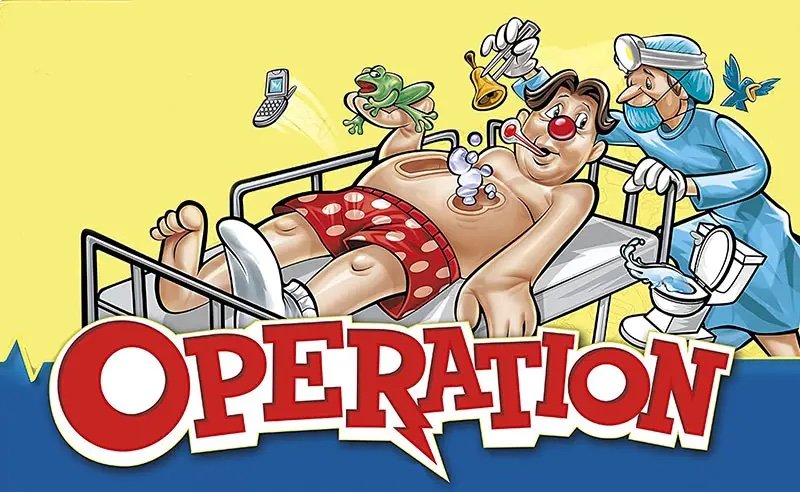Changing the United States Healthcare System
1 comment

Image from https://www.ultraboardgames.com/operation/editions.php
Shocking Statistics:
To begin, I would like to share some of the most shocking statistics that Dr. Flynn shared in his talk. First, the United States spends around 18% of GDP on healthcare. Initially, I was not taken aback by this decently large percentage, but Dr. Flynn proceeded to mention that the entirety of the United States defense spending was only 4% of GDP in 2019. Prior to listening to Dr. Flynn’s talk, I maintained that a decrease in the United States’ spending on defense would allow the government to allocate funding to many other more life-giving programs. However, I now believe that a restructuring of our healthcare system has the potential to achieve the same goal on a much higher scale. In addition, he mentioned that the sum of all Social Security checks that were sent out in 2019 was only 5% of GDP. These comparisons really helped me to put the 18% number into perspective. I think it is important to note that since this talk was recorded in September 2020, the percentage of United States spending on healthcare assuredly increased with the rise of the pandemic. Even though the 18% of GDP is obviously high in comparison to other sectors of spending in the United States, it doesn’t mean much unless we compare it to other countries. The most shocking comparison in healthcare spending is that Singapore only spends 4.2% of their GDP on healthcare, and their system is highly praised for many reasons. Major problems within the United States healthcare system are exposed when its performance is compared to the performance of Singapore’s healthcare system. For example, the chances of a mother dying during childbirth in the United States is approximately seven times larger than the chances of a mother dying during childbirth in Singapore. Also, the infant mortality rate in the United States is about three times higher than the infant mortality rate in Singapore. After drawing this comparison, the problem becomes clear. The United States is wasting an exorbitant amount of money on a healthcare system that performs at a much lower level than foreign countries that spend less money on their healthcare systems.
Competition and Price Transparency:
Dr. Flynn made very convincing arguments regarding the benefits of a free market approach to healthcare. A consistent theme I have noticed through all of the course material thus far is that general quality of life improves when a free market approach is promoted. The current largest barrier to a free market healthcare system is that the public does not know the prices of any non-cosmetic medical procedures beforehand. This aspect of the United States healthcare system almost completely removes the ability for the system to be conducted as a free market because the public is not able to “shop around” to find the best provider for their needs and priorities. In Singapore, everyone is able to see prices and measures of quality for all medical organizations or practices. This widespread access to information helps facilitate a free market process in Singapore’s healthcare system. Dr. Flynn described the juxtaposition of one medical practice with high quality services and high prices and another medical practice with low quality services and low prices. When operating in a free market, the first practice will be encouraged to lower their prices, and the second practice will be encouraged to increase the quality of the services. Thus, multiple practices will be offering high quality services at lower prices to the public. If this is the case, I firmly believe that the overall quality of life for all customers will improve. Unfortunately, medical practices in the United States do not have the motivation for improvement that comes from a competitive free market system. The incentives and motivation in our system are extremely distorted because the practices are not receiving payment directly from customers. Instead, they are receiving payment from customers’ insurance. Therefore, this has caused our healthcare system to be “completely unresponsive to the needs of normal people” in the words of Dr. Flynn.
When will our system change?
To conclude, I want to pose the question of why no changes similar to the ones discussed by Dr. Flynn have been introduced in the United States. In the first part of his talk, Dr. Flynn clearly pointed out that any addendums he would propose are already legal in the United States. Also, he believes that if his proposed changes are adopted, then the money spent on healthcare in the United States will decrease by about 75%. This will allow for large sums of money to be reallocated to other public programs that have been neglected because of a lack of available funds. If those excess funds were properly reallocated, then I think many benefits will be seen in the United States in addition to those that will result from the changes to the healthcare system.
Comments